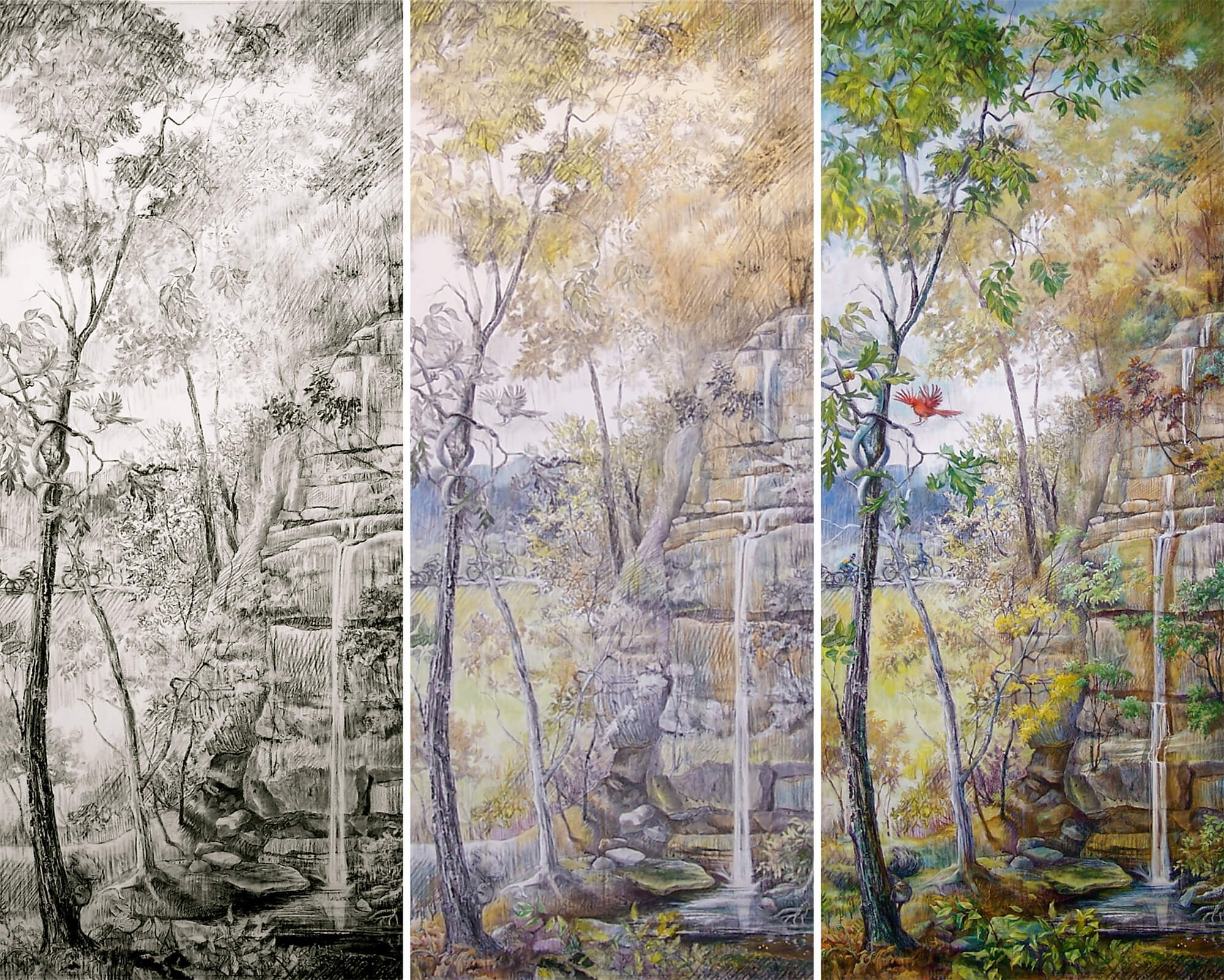I am always intrigued by the process of making art and find it helpful to know of methods used by others, even in very different mediums. In this post, I illustrate a technique I have been developing and still hope to explore a great deal more. It involves working in layers of charcoal, acrylics, and oils, with additions of sand, dirt, leaf metals, and more. This technique helps me find the composition and individual elements of the piece. Visually it can yield an overall atmospheric effect with moments of almost hyperrealism.
One of four panels that comprise Integral Spaces, a commissioned work for UofL Health Care Outpatient Center.

Seen here in three phases:
- Charcoal under drawing
- Preliminary painting phase
- Final painting
The painting, Cliff and Wood (from Integral Space), is composed of layers of charcoal, acrylics, and oil. For centuries, painters have worked over monochromatic paintings or drawings. I complete an underdrawing in black charcoal to keep the inherent energy of drawing alive and visible throughout the process. The drawing is sprayed with fixative before applying thin layers of acrylic and then oil paint. Areas of the final painting may have many layers and some only two. Dimensional textures (using sand, dirt, etc.) and abstract or loose areas are juxtaposed with highly detailed ones in an attempt to convey the very real aspect of nature that I can never fully capture. My hope is that viewers can interact with the piece and see something new each time they return.
"The creative act is not performed by the artist alone; the spectator brings the work in contact with the external world by deciphering and interpreting its inner qualifications and thus adds his contribution to the creative act."
– Marcel Duchamp
Clare’s mixed media murals are also composed of layers: charcoal, acrylics, and oil. Texturing elements include sand, dirt, glitter, leaf metals, and more. For centuries painters have worked over monochromatic paintings or drawings for a variety of reasons. Clare often completes an under drawing in charcoal before applying paint to keep the inherent energy of drawing alive in the painting process, and as a way of keeping the process visible. Washes and layers of acrylic color are applied before oil paint. Areas of the painting may have many layers and some only two. Dimensional textures and abstract or loose areas are juxtaposed with highly detailed areas. This creates a surface and a composition that viewers can interact with and see something new each time they return.


